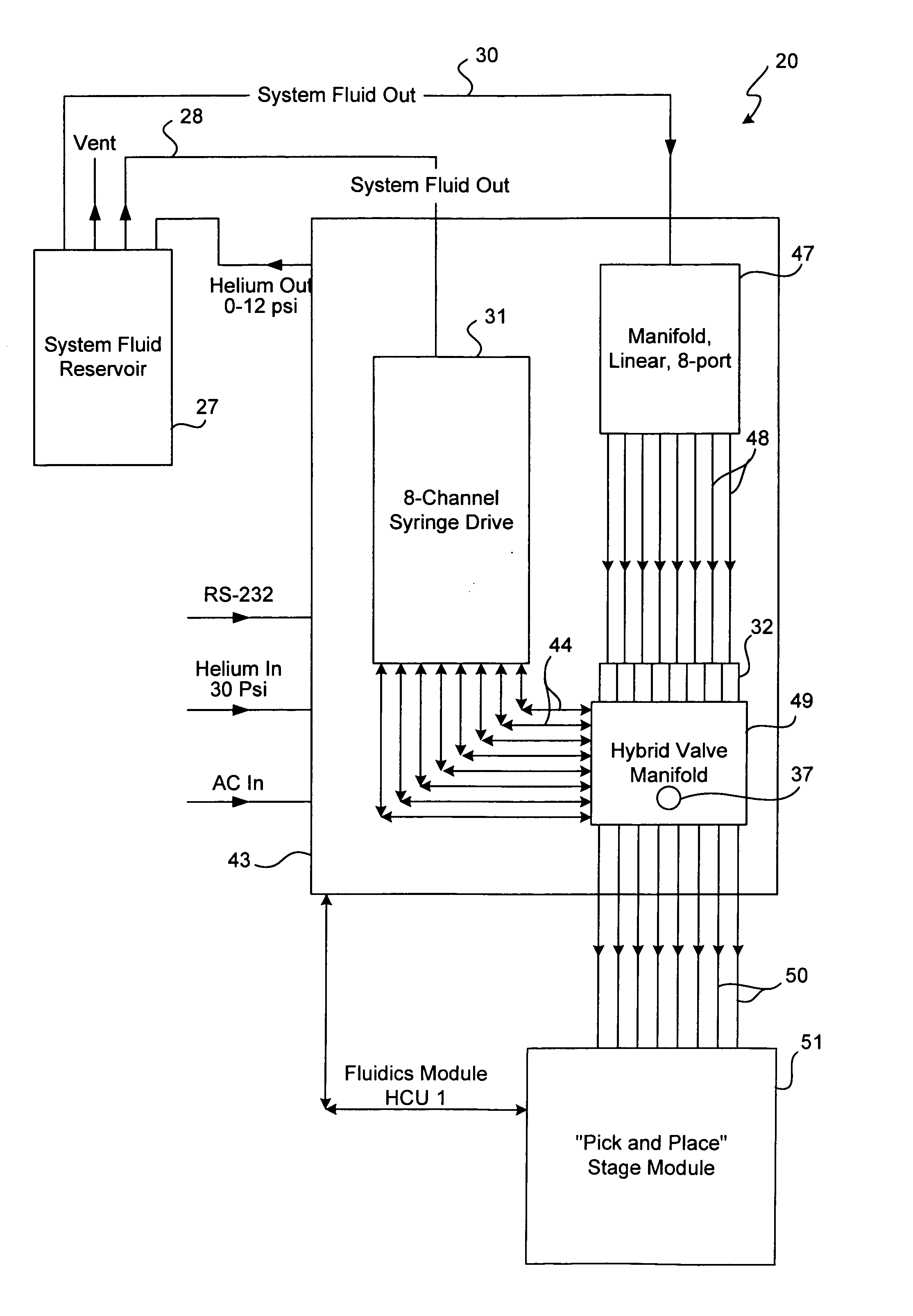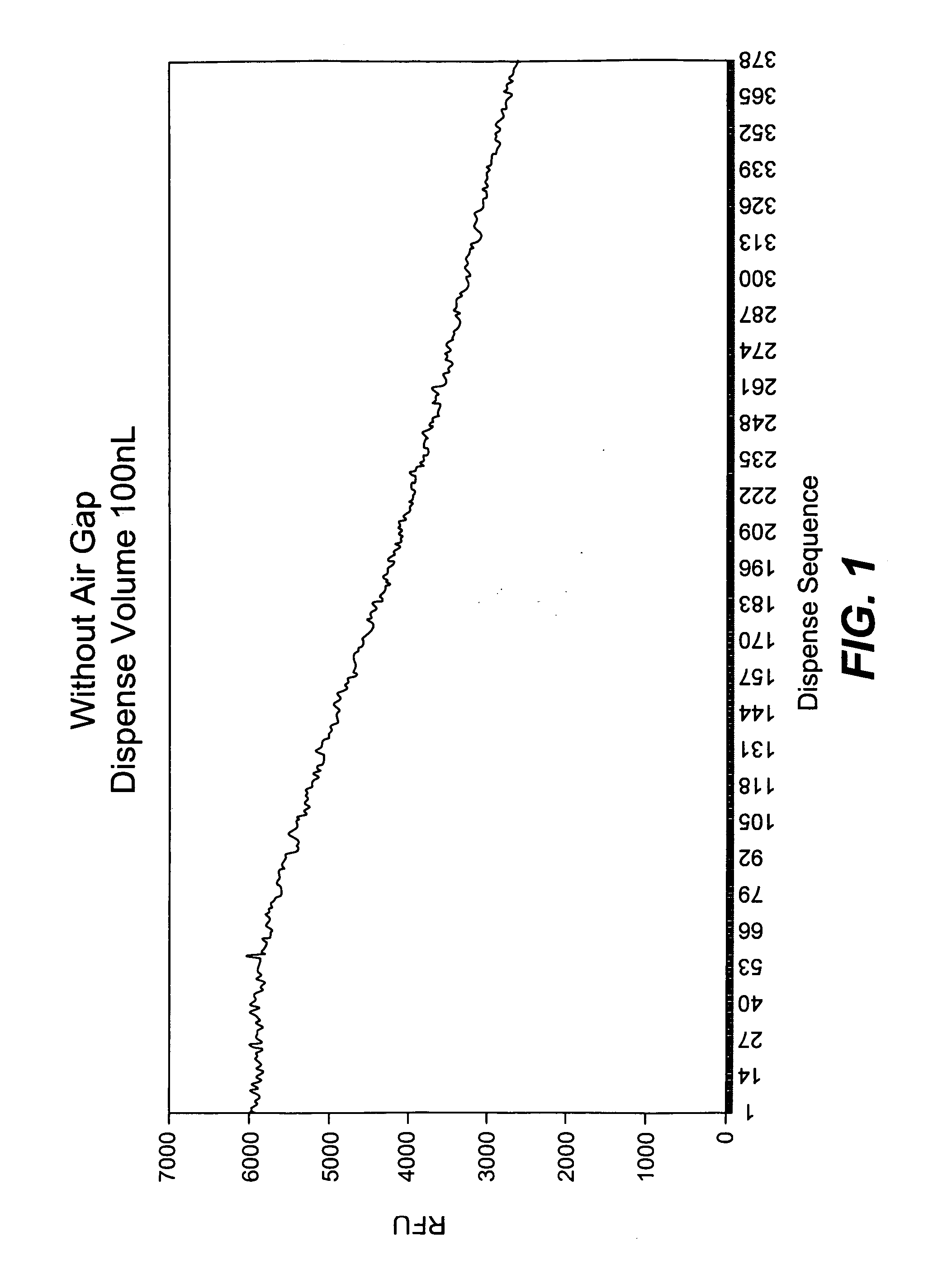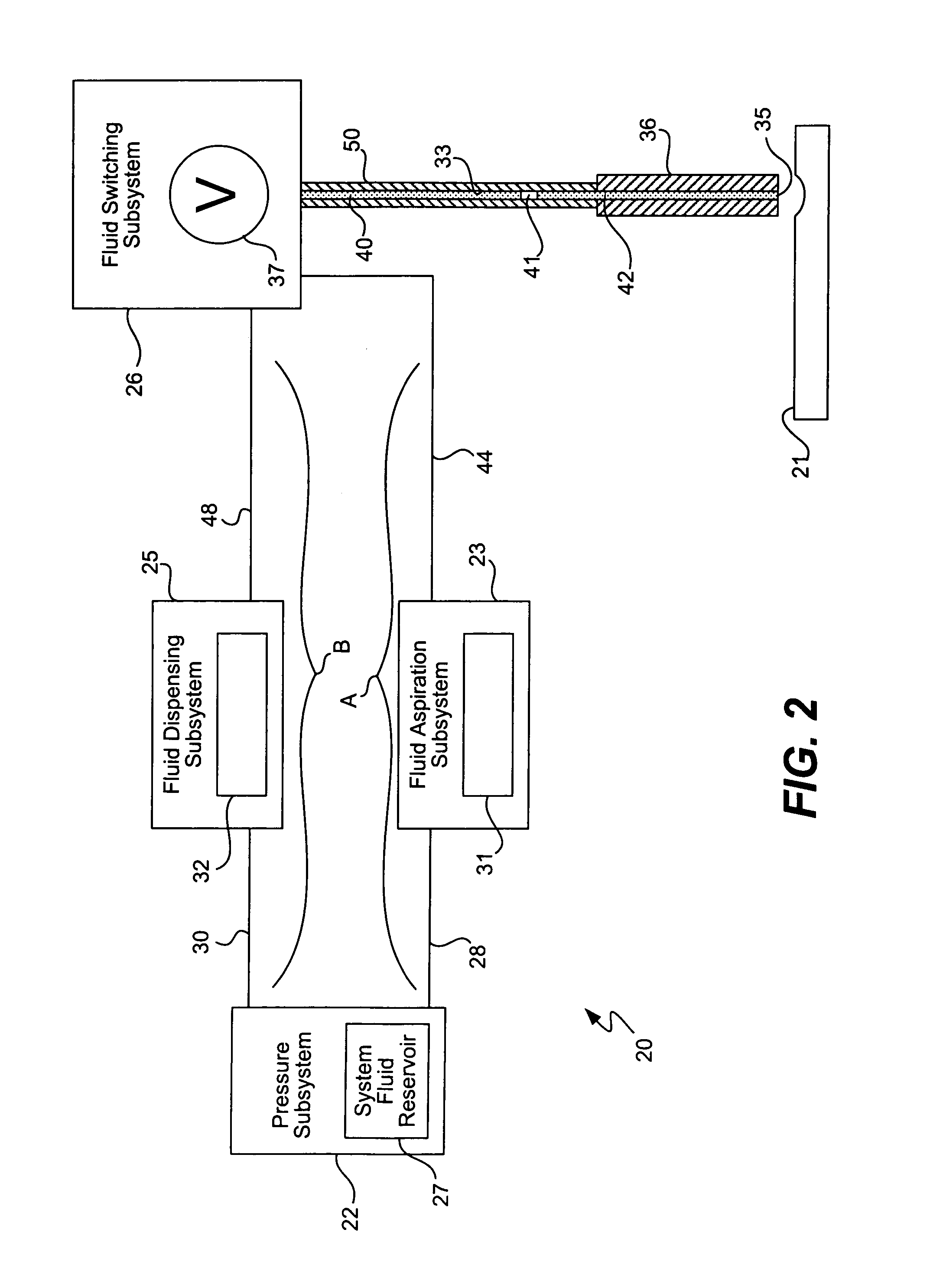Method of purging trapped gas from a system fluid contained in an actuation valve
a technology of trapped gas and actuation valve, which is applied in the direction of transportation and packaging, laboratory glassware, instruments, etc., can solve the problems of rate-limiting hardware, reducing volume, and lowering costs by an order of magnitud
- Summary
- Abstract
- Description
- Claims
- Application Information
AI Technical Summary
Benefits of technology
Problems solved by technology
Method used
Image
Examples
Embodiment Construction
[0043]While the present invention will be described with reference to a few specific embodiments, the description is illustrative of the invention and is not to be construed as limiting the invention. Various modifications to the present invention can be made to the preferred embodiments by those skilled in the art without departing from the true spirit and scope of the invention as defined by the appended claims. It will be noted here that for a better understanding, like components are designated by like reference numerals throughout the various figures.
[0044]Referring now to FIG. 2, a non-contact liquid handling method and system, generally designated 20, is provided which is capable of precise low volume, liquid dispensing onto a target or destination substrate surface 21. Broadly, in one specific embodiment, the liquid handling system 20 includes a pressure subsystem 22, a fluid aspiration (input) subsystem 23, a fluid dispensing (output) subsystem 25 and a fluid switching subs...
PUM
 Login to View More
Login to View More Abstract
Description
Claims
Application Information
 Login to View More
Login to View More - R&D
- Intellectual Property
- Life Sciences
- Materials
- Tech Scout
- Unparalleled Data Quality
- Higher Quality Content
- 60% Fewer Hallucinations
Browse by: Latest US Patents, China's latest patents, Technical Efficacy Thesaurus, Application Domain, Technology Topic, Popular Technical Reports.
© 2025 PatSnap. All rights reserved.Legal|Privacy policy|Modern Slavery Act Transparency Statement|Sitemap|About US| Contact US: help@patsnap.com



